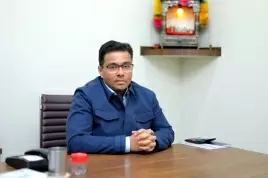An indigenous practice turned into a technological marvel
10-September-2010
Vol 1 | Issue 2
The breakthrough innovation of the Tatas, the water purifier ‘Swach’, is a perfect example of how a traditional idea could be turned into an useful appliance by the efficient team work of scientists. The corporate social responsibility initiative of the Tatas has helped in the transformation of an indigenous idea of using rice husk ash (RHA) for water purification into a nanotech-enabled, cost-effective water purifier.
“In my knowledge, ‘Swach’ is certainly the lowest cost water purifier in the world,” says Sabaleel Nandy, Head of Water Purifier Business, Tata Chemicals. For Amrita Dey, the marketing manager, it is heartening to see people in villages serving ‘Swach’ water with pride. “Every fifteen seconds a child dies due to water-borne diseases in the world. We strongly feel the need to provide safe drinking water,” she says.
Nandy says that it was purely a scientific quest that resulted in this innovative product. RHA was first used by P C Kapoor, a professor at IIT Kanpur, to filter bacteria. In the late nineties he continued his passion as a consultant at TRDDC (Tata Research Development & Design Centre) lab in Pune. He developed ‘Sujal’ filters using rice husk ash, cement and pebbles. It had a complex fabrication process, not suitable for commercialization and the purification capability of 85% did not guarantee protection from water-borne diseases. However the technology showed promise.
 |
|
Well done! The Tata Swach team with Ratan Tata
|
Sujal caught the attention of R Gopalakrishnan, Vice-Chairman of Tata Chemicals, on his visit to TRDDC in 2004. He thought it had the potential of emerging as a consumer durable. It was revived in 2006. It was the internationally recognized Dr Murali Sastry, a renowned nanotechnologist and alumnus of IIT Madras, who took the challenge of impregnating RHA with nano silver particles and thus enabling the fabrication of the present compact, affordable, low maintenance and highly efficient water purifier, taking it to the masses.
“We knew that nano silver had anti-bacterial properties but the challenge was to integrate them with RHA and this took us two years,” says Sastry. “We had to work out the chemistry to bind RHA with nano silver and study the microstructure and surface chemistry of RHA,” he says, adding,” ‘Swach’ has the potential to positively impact the lives of millions of people globally”.
Nandy points out that silver spoons and bowls had been traditionally used in India to feed infants as it killed germs. ‘Swach’, with no requirement of electricity, running water or use of chemicals, makes it an environment-friendly product. Besides, RHA used as the base material for the purifier’s filtration unit is a by-product of rice milling and found in plenty in a paddy producing country like India.
Amrita Dey, who visited each of the 600 villages from Dindigul in Tamil Nadu to Barabanki in Uttar Pradesh to test the first prototype developed for water filtration found that the filtration bulb to be fitted in ‘matkas’ and buckets needed a proper filtration unit. “The housewives are loaded with work and so needed a product that was maintenance-free and did not require to be serviced as conventional water purifiers,” she says. The team behind ‘Swach’ is happy that they have been able to fulfill these requirements and make potable water easily available to millions of ordinary citizens.
















